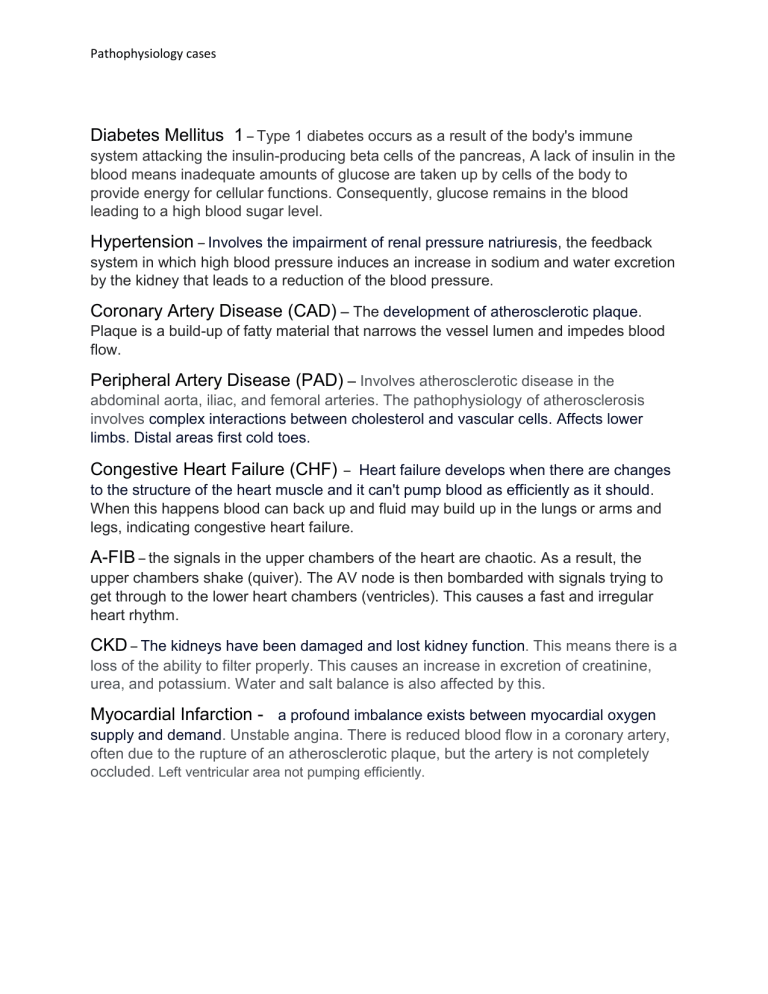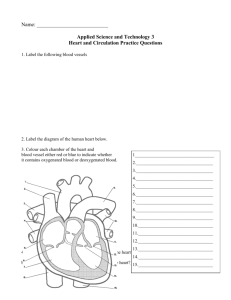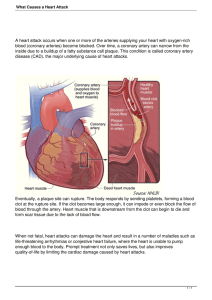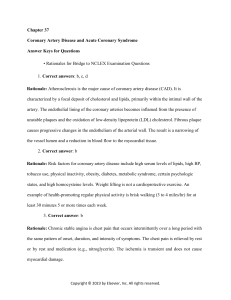Uploaded by
cyndi_gx2
Pathophysiology Case Studies: Diabetes, Hypertension, Heart Disease
advertisement

Pathophysiology cases Diabetes Mellitus 1 – Type 1 diabetes occurs as a result of the body's immune system attacking the insulin-producing beta cells of the pancreas, A lack of insulin in the blood means inadequate amounts of glucose are taken up by cells of the body to provide energy for cellular functions. Consequently, glucose remains in the blood leading to a high blood sugar level. Hypertension – Involves the impairment of renal pressure natriuresis, the feedback system in which high blood pressure induces an increase in sodium and water excretion by the kidney that leads to a reduction of the blood pressure. Coronary Artery Disease (CAD) – The development of atherosclerotic plaque. Plaque is a build-up of fatty material that narrows the vessel lumen and impedes blood flow. Peripheral Artery Disease (PAD) – Involves atherosclerotic disease in the abdominal aorta, iliac, and femoral arteries. The pathophysiology of atherosclerosis involves complex interactions between cholesterol and vascular cells. Affects lower limbs. Distal areas first cold toes. Congestive Heart Failure (CHF) – Heart failure develops when there are changes to the structure of the heart muscle and it can't pump blood as efficiently as it should. When this happens blood can back up and fluid may build up in the lungs or arms and legs, indicating congestive heart failure. A-FIB – the signals in the upper chambers of the heart are chaotic. As a result, the upper chambers shake (quiver). The AV node is then bombarded with signals trying to get through to the lower heart chambers (ventricles). This causes a fast and irregular heart rhythm. CKD – The kidneys have been damaged and lost kidney function. This means there is a loss of the ability to filter properly. This causes an increase in excretion of creatinine, urea, and potassium. Water and salt balance is also affected by this. Myocardial Infarction - a profound imbalance exists between myocardial oxygen supply and demand. Unstable angina. There is reduced blood flow in a coronary artery, often due to the rupture of an atherosclerotic plaque, but the artery is not completely occluded. Left ventricular area not pumping efficiently.







